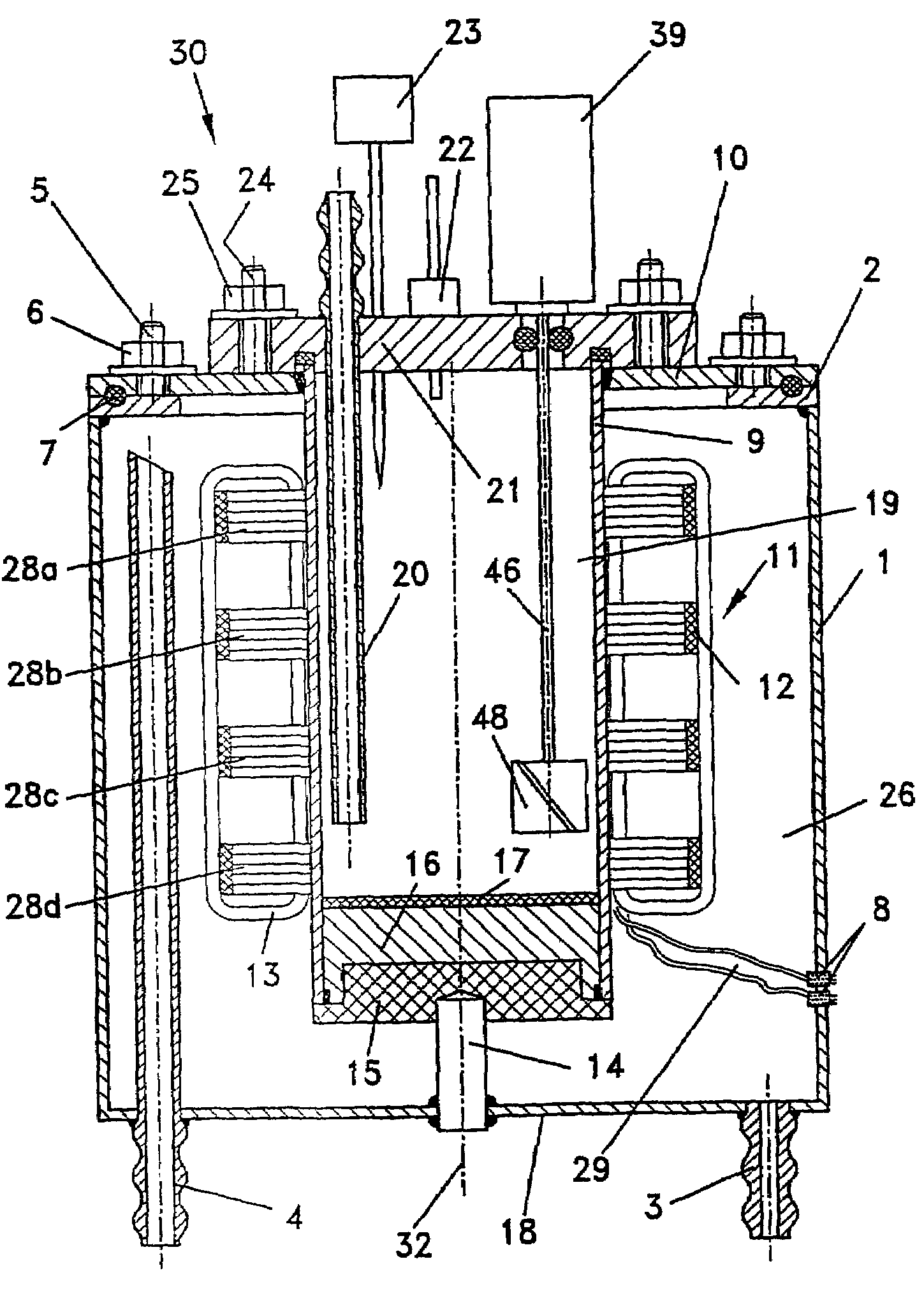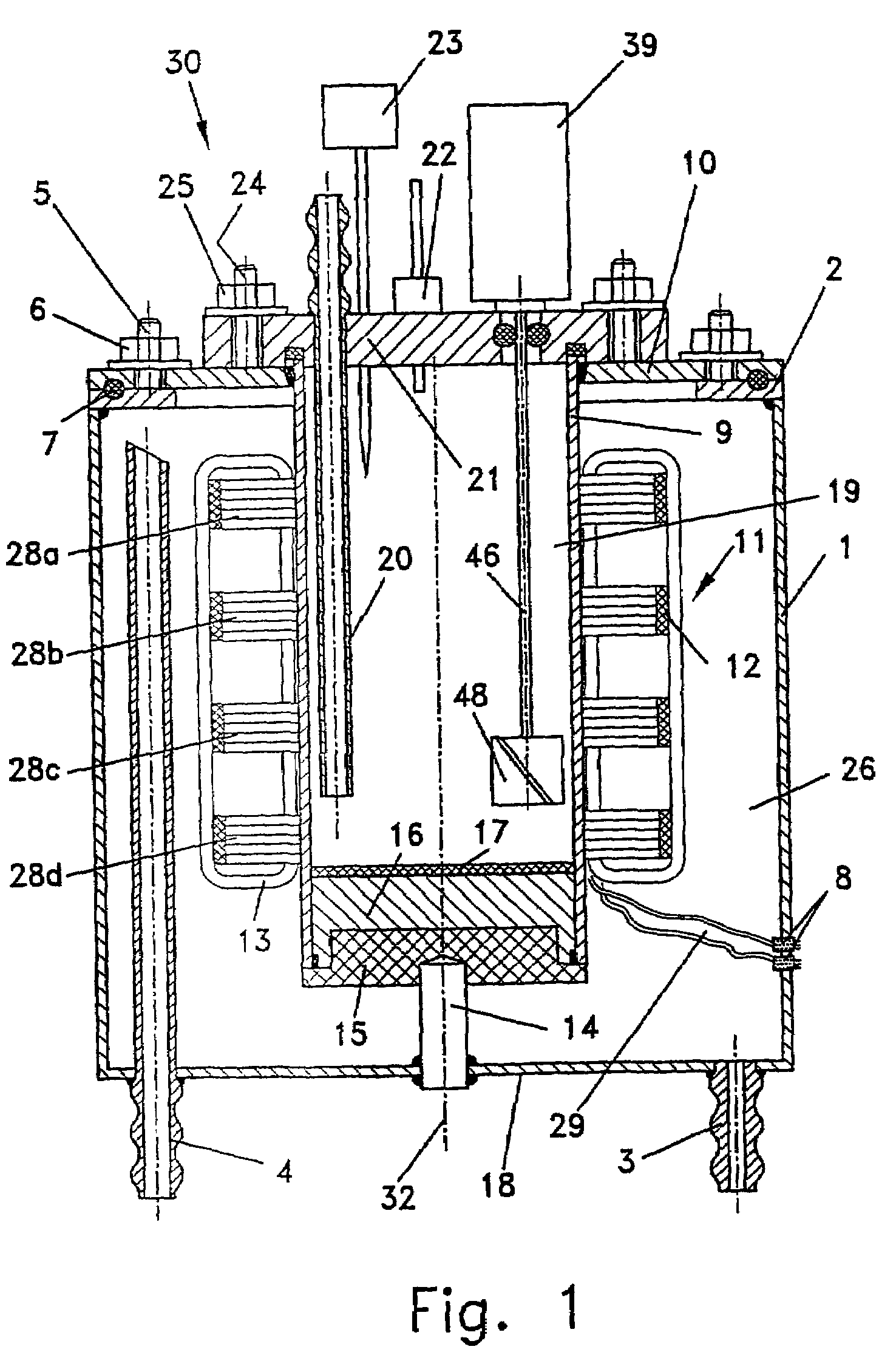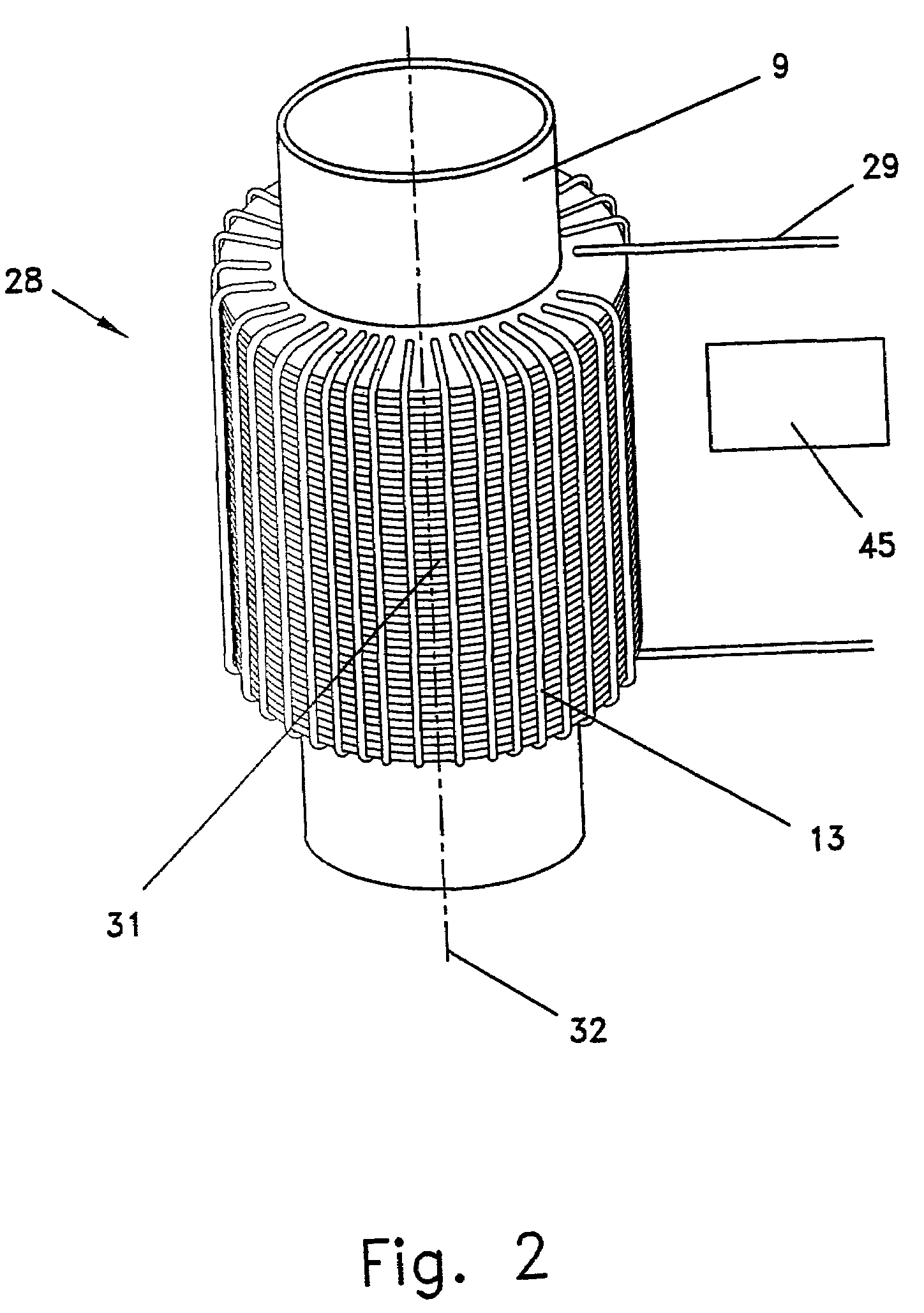Ultrasonic reactor and process for ultrasonic treatment of materials
a technology of ultrasonic reactor and material, applied in the direction of grain treatment, generator/motor, mechanical vibration separation, etc., can solve the problems of low energy output, inconvenient operation, and inability to reliably operate,
- Summary
- Abstract
- Description
- Claims
- Application Information
AI Technical Summary
Benefits of technology
Problems solved by technology
Method used
Image
Examples
example 1
Ultra-Fine Grinding
[0094]85 g of silver particles are mixed with 780 ml of deionized water. The suspension is fed into a 1 L chamber, and is treated for a period of 3 hours at a pressure of 3.5 atmospheres with an influx of ultrasonic energy having a power of 3 kW, wherein the temperature within the process chamber is 44° C.
[0095]The following is the particle size distribution, in microns, wherein the subscript refers to the percentage of total particles having a size equal to or less than the listed value:
[0096]
d10d50d90Initial7.926.154.3Final0.090.140.2
example 2
Ultra-Fine Grinding
[0097]1000 g of silica particles for use in glazed coatings are added to 4600 ml of deionized water. The suspension is fed into a 5 L chamber, and is treated for a period of 90 minutes at a pressure of 3.2 atmospheres with an influx of ultrasonic energy having a power of 4.6 kW, wherein the temperature within the process chamber is 42° C.
[0098]The following is the particle size distribution in microns, wherein the subscript refers to the percentage of total particles having a size equal to or less than the listed value:
[0099]
d10d50d90Initial0.81.95.9Final0.090.61.5
example 3
Ultra-Fine Grinding
[0100]600 g of ceria particles (CeO2) needed for Chemical Mechanical Planarization (CMP) are added to 4600 ml of deionized water. The suspension is fed into a 4.5 L chamber, and is treated for a period of 60 minutes at a pressure of 3.0 atmospheres with an influx of ultrasonic energy having a power of 4.6 kW, wherein the temperature within the process chamber is 32° C.
[0101]The following is the particle size distribution in microns, wherein the subscript refers to the percentage of total particles having a size equal to or less than the listed value:
[0102]
d10d50d90Initial0.63.248.93Final0.150.240.65
PUM
| Property | Measurement | Unit |
|---|---|---|
| diameter | aaaaa | aaaaa |
| thickness | aaaaa | aaaaa |
| inner diameter | aaaaa | aaaaa |
Abstract
Description
Claims
Application Information
 Login to View More
Login to View More - R&D
- Intellectual Property
- Life Sciences
- Materials
- Tech Scout
- Unparalleled Data Quality
- Higher Quality Content
- 60% Fewer Hallucinations
Browse by: Latest US Patents, China's latest patents, Technical Efficacy Thesaurus, Application Domain, Technology Topic, Popular Technical Reports.
© 2025 PatSnap. All rights reserved.Legal|Privacy policy|Modern Slavery Act Transparency Statement|Sitemap|About US| Contact US: help@patsnap.com



